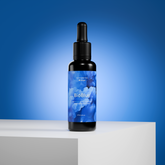Nerve Injury
How does RLT help?
Many recent studies investigating the effects of RLT in peripheral nerve injury models have shown an immediate protective effect, boosting electrical activity in the injured peripheral nerve. RLT also modulates inflammatory processes, by reducing edema formation and inflammatory cell migration. Finally, IR irradiation has been shown to increase the rate of axonal growth and the thickness of myelin sheaths.

Tell me more...
Most cases of nerve injury recover spontaneously over a varying time range. Regeneration of a peripheral nerve can start almost immediately after the injury. However, despite the ability of neurapraxia (i.e., mild nerve injury) and axonotmesis (i.e., severe nerve injury) to recover spontaneously and the support of cortisone, or anti-inflammatory or neurotrophic drugs, the symptoms experienced by the patient do not always resolve quickly. This process often requires treatment with drugs, such as steroids, for very long periods, with the risk of developing other pathologies as a result of lowering the immune defenses.
The effects of red light therapy (RLT) on nerve damage were verified in the sciatic nerve in 17 articles, facial nerve in 3, fibular nerve in 2 articles, and vagus nerve, accessory nerve, alveolar nerve, and dorsal root in one article each.
Scientific literature reports that painful neuropathies are associated with altered mitochondria, such as in chemotherapy-induced neuropathy, diabetic neuropathy, HIV-associated neuropathy and Charcot-Marie-Tooth neuropathy, suggesting that mitochondria are mechanistically involved in these diseases. In each case, the reduction of ATP availability in stress conditions, such as a nerve injury, results in cell death and neurodegeneration, as the ATP reduction leads to neuronal depolarization, favoring the release of neurotransmitters and impairing their ATP- dependent reuptake.
In response to trauma causing partial or total nerve rupture, a series of events results in neuroplasticity that may or may not restore the functionality of the injured nerve(s). The neuron capacity of self-recovery is already well known and is particularly present (and not diminished) in autonomic, sensory, and motor neurons. In this context, regenerative neuroplasticity can, therefore, promote the morphological and functional restoration of injured peripheral axons.
Neurotrophic factors, such as nerve growth factor and brain derived neurotrophic factor, are capable of playing an important role in the process of axonal regeneration, since they are directly associated with the promotion of neuronal survival. It is known that complete nerve regeneration depends on trophic conditions which are highly favorable to neuronal protein synthesis. Through its photochemical and photobiological effects produced at the cellular level, it has been shown that RLT can favor the development of pro-regenerative trophic conditions by increasing the expression of neurotrophic factors and may also inhibit the inflammatory process.
A critical literature review article found that more than 80% of the experimental studies conducted with RLT had led to a positive result in functional recovery of nerves in a postoperative period. It is believed that the mechanism of action consists of the absorption of photons by the nerve cell, which possibly accelerates the activity of the electron transport chain, increasing the synthesis of ATP in the mitochondria and thus favors pro-regenerative cellular reactions (i.e., nerve growth factor) and neuroprotection. Other studies point to actions mediated by the increased blood supply and cell proliferation.

What does the research show?
“This study reveals a significant effect of LED-mediated IR exposure on the functional recovery of the facial nerve.” (1)
“Physiotherapy combined with PBM leads to better sensory-motor recovery in patients with spinal cord injury as well as a better perception of health and quality of life.” (2)
“In a limited sample size, our study concluded that direct PBM at the site of spinal cord injury would not produce adverse effects within the appropriate irradiation parameters. The method is safe, feasible, and does not add additional trauma to the patient.” (3)
“Photobiomodulation appears to be as effective as conventional therapies, being a coadjutant therapeutic opportunity for the treatment of trigeminal neuralgia.” (4)
“PBM led to an acceleration on muscle repair process, and effects were more evident in 2 weeks after peripheral nerve injury. Thus, PBM is indicated for the area over both the injured nerve and the affected muscle.” (5)
“This case report shows that PBMT can be a very promising approach for the management of severe (nerve injury) cases that are not improving with conventional methods.” (6)
"Roch-kind et. al. demonstrated that LLLT applied simultaneously to the injured sciatic nerve and the corresponding segment of the spinal cord accelerates the process of regeneration of the injured peripheral nerve." (7)
"Light therapy significantly improved the average length of axonal regrowth and increased the total axon number. These results suggest that light may be a promising therapy for human spinal cord injury." (8)
**While the current scientific research seems to indicate many positive benefits of RLT in relation to reducing systemic inflammation, there is still an appreciable necessity for more extensive research to be conducted in this area, including double-blind RCT (randomized controlled trials), to provide a more comprehensive, robust overview that will further elucidate the optimal parameters and appropriate uses of RLT, which will ultimately lead the most safe and efficacious uses for those wanting to heal a nerve injury.







